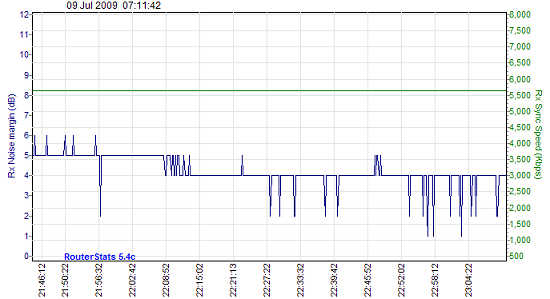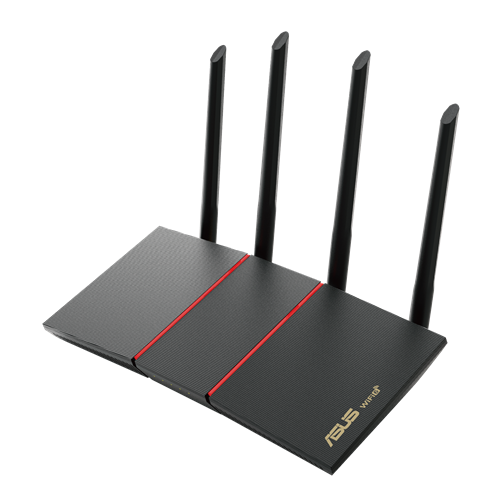

Only the left-hand set of antennas was used in these tests. This box is part of the TR-398 testbed and will likely be the one used once the next revision of the SNB wireless test process is finalized. An octoScope Pal5 was used for the 5 GHz tests, set to 80 MHz bandwidth to provide the maximum two-stream 802.11ac link rate of 867 Mbps.Įach router was centered on the turntable in an octoBox 38 test chamber, as shown below.

Since the Pal24 is configured to operate as an N device, this setting will limit the maximum link rate to 144 Mbps. An octoScope Pal24 was used for the 2.4 GHz tests, set to use two streams with 20 MHz bandwidth. I did, however, also test the routers with an AC station. You wouldn’t think this would make much difference, but I found when switching from running 2.4 to 5 GHz tests, it took over a minute to find and associate to the router’s 5 GHz SSID. So instead of being able to send out a probe request and waiting for APs to reply, a STA using DFS channels must wait until an AP announces itself. I also found using DFS channels can significantly increase 5 GHz association times because devices (STAs) can only passively scan for available APs.

Enabling 160 MHz requires using DFS channels, which aren’t available in all countries or reliably where public safety (including airport) radar is in use. I did not run tests with 160 MHz bandwidth enabled on 5 GHz. Since most devices operate in crowded 2.4 GHz environments, I kept our traditional setting. HE features enabled – This enables AX link rates and 1024 QAM modulation on both bands.The goal of this round of tests is to assess the performance seen by a two-stream AX (aka Wi-Fi 6) device by running classic rate vs. Updated 9/23/19: Corrected values for RAX80. I didn’t open up my samples, but gathered the information below from the soon-to-be departed WikiDevi and around the ‘net.

It’s the only two-stream design in this test and the most aggressively priced at around $100 less than the others. The NETGEAR Nighthawk AX4 is the lone representitive of Intel’s AX router efforts that I’ve been able to get my hands on. I didn’t have NETGEAR’s tri-band AX12 Nighthawk RAX200 on hand, which has essentially the same design. The ASUS ROG Rapture GT-AX11000 is the only tri-band router tested, but its Wi-Fi design is essentially the same as the RT-AX88U’s. So the most direct comparison can be made between these two products.
#Asus router comparison 64 Bit#
a Broadcom BCM49408 64 bit quad-core 1.8 GHz processor and two BCM43684 4 stream an/ac/ax radios. I tested the five draft AX routers for this go-around, shown in Table 1, three based on Broadcom’s AX platform, one on Qualcomm’s and one Intel based.īoth the ASUS RT-AX88U AX6000 Dual Band 802.11ax WiFi Router and NETGEAR Nighthawk AX8 8-Stream AX6000 WiFi Router are built on essentially the same Broadcom platform, i.e. But unlike my first pass at this last December ( First Peek At Wi-Fi 6: ASUS RT-AX88U & NETGEAR RAX80), this time I’m going to look at how AX routers perform using an AX client. So I’m going back to the basics for this article and just testing rate vs. My takeaway from this is that it’s still too early to post meaningful results trying to determine whether OFDMA delivers on its promises of increasing total bandwidth capacity and reducing latency. When it is enabled, it will be for downlink only AX MU-MIMO UL (uplink) won’t be supported until a later revision of the 11ax spec. MU-MIMO support has also generally been MIA for AX clients. The former enabled OFDMA DL (downlink) only for both bands back in August, while ASUS pushed out a Beta firmware in late July that supports OFDMA DL in 5 GHz only. The exceptions to this in the consumer Wi-Fi realm are NETGEAR’s Qualcomm-based RAX120 and ASUS’ Broadcom-based RT-AX88U. That’s right, despite what you read on their websites and product boxes, Wi-Fi 6 routers generally don’t support key technologies that they advertise. That effort has been hampered by the fact that all the consumer Wi-Fi 6 products on the market to date have not had either OFDMA or AX MU-MIMO enabled. I’ve been in the thick of it, trying to develop Wi-Fi 6 test methods that can show whether these draft-standard products deliver on the benefits they promise. It’s been a long, slow slog for the engineers developing Wi-Fi 6 chipsets and products. Check the Wi-Fi Router Charts for the latest data. NOTE! The products in this review have been retested.


 0 kommentar(er)
0 kommentar(er)
